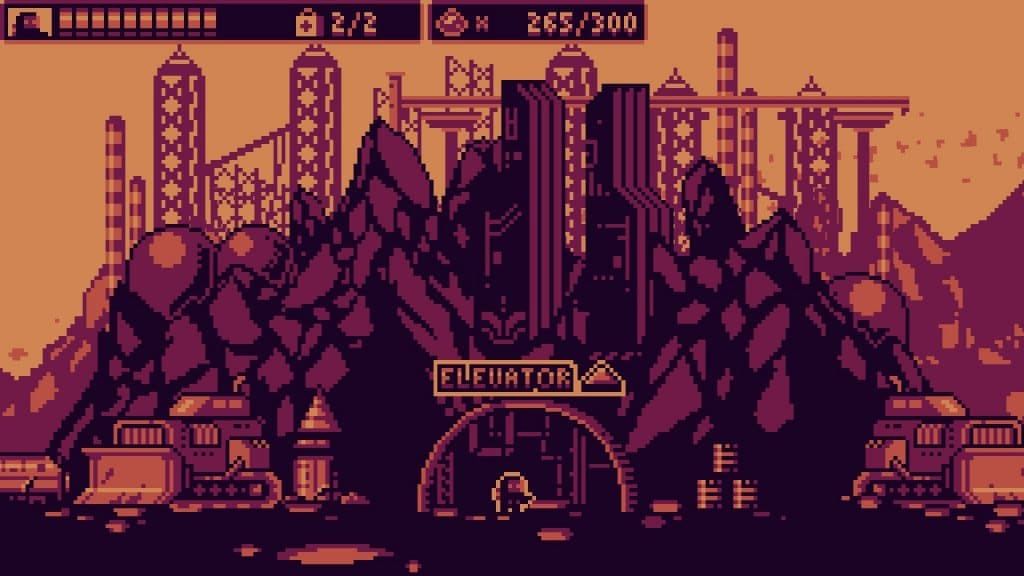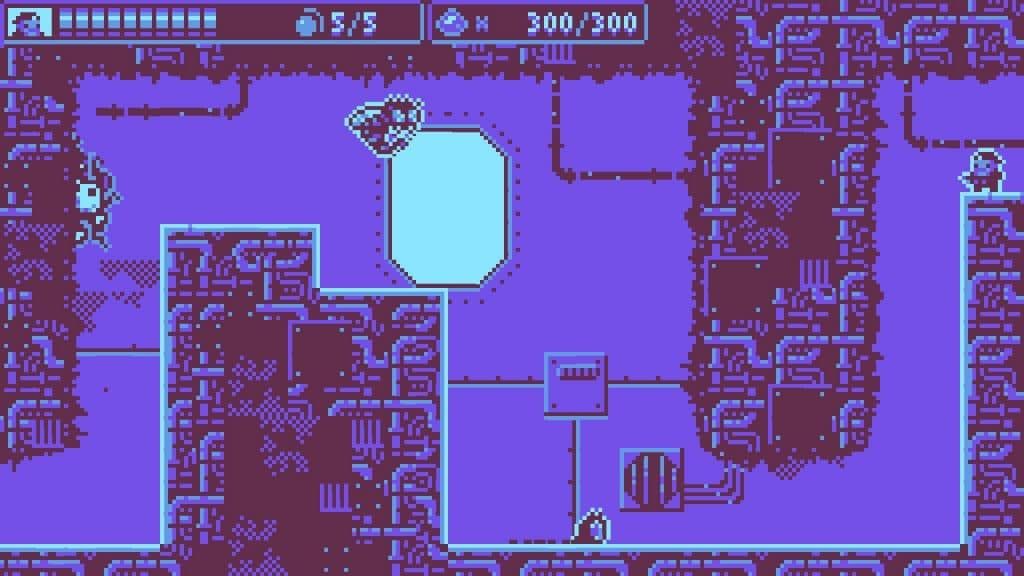Stay here to die? They can eat my shit!
B.I.O.T.A is a 2D action Metroidvania game by an Italian, one-man development studio, Small Bros, AKA Ivan Porrini, over a two year period.
Unlike many games, this title fits snugly and truly into the Metroidvania genre, as items are used to unlock areas of the map. In BIOTA, this results in the use of vehicles to travel to parts of the map otherwise inaccessible.
So first off, let’s talk numbers. BIOTA offers 8 character classes, about 6 to 7 hours of gameplay, and 54 interchangeable colour palettes that completely change the game’s visual appearance.
But let’s be real for a second. The retro games market can feel as cluttered and stale as a teenager’s bedroom. Games of this niche must therefore have something special to mark them out from the retro riff-raff. So what does BIOTA have, aside from a few pretty colours?
Alieeeeeens!
The story of BIOTA is simple but perfect for this kind of game and the past games to which it is alluding.
An alien plague is taking over the world and infecting people, plants and animals and it’s your job to stop it. With fire, bullets, or whatever else you can get your hands on. Simple, right? Well yeah, apart from at the end, when things go a bit awry and there’s a slight twist. But we will leave you to discover that for yourself.
The story, be it simple, is perfect for facilitating everything that needs to happen in the game. You need to shoot aliens. You need to travel around a bit. Then you need to shoot some more, slightly bigger aliens. And that’s about it. Ideal.
Active-aggressive
Being an 8-bit game, BIOTA is aesthetically simple and the world, like the story is simple too. The world is hostile, aggressive and very much weapon-oriented. Fear and paranoia run rife through the ranks of the soldiers, as they feel something might be up with V-Corp, the corporation for whom you work, charged with the defence of North America and the world.
Everything is as tense as it should be to make things exciting for the player, but nothing is overcomplicated or frustrating. It all just works.
8-bit alien bites
A game like this could not be made in any other visual design format than 8-bit graphics. It is the perfect design format and shows great knowledge on the side of the developer to have chosen it, bearing in mind all the gameplay and sound of the game.
Lovingly constructed sprite work makes everything feel alive and kicking. And in the case of some of the enemies, licking. A lot has been done with very little.
The game does a good job at harking back to older consoles from the early eighties, such as the NES or Sega Mark III, causing the game to drip with that rich, sepia nostalgic goodness. And of course, the 54 palettes add to this effect too.
The 54 palettes, as can be seen from the screenshots, are vastly different. They all give the game a very different feel, too. Some are aggressively high-contrast and others are more gentle and easier on the eye. They are all fun to play around with and all appear little love letters to the games of yore.
The player starts with about twenty palettes and the rest must be unlocked by finding 30 different Specimen collectables throughout the game.
Due to the palettes making such a dramatic visual difference and the allusion to older colour palettes throughout video game history, this feels more a contextually relevant feature than a mere gimmick.
Land, sea and sky
The primary gameplay loop for BIOTA is going underground to shoot aliens and mutated humans. Within this is pushing levers and turning switches to activate objects to open up the next level.
BIOTA has a perfect balance of combat and platforming. Unlike Itorah, platforming is tight and achieves the sweet spot of challenge every time.
It is challenging enough to repeat many sections, especially in the outer space level toward the end of the game. The player must jump onto tiny, spinning platforms or fall to their death. But it is a challenge that is possible, therefore rewarding, not frustrating.
BIOTA may not be as challenging as many games out there, though the developer mentions Celeste and Super Meat Boy as influences. But BIOTA captures the challenging spirit of these games and never appears to reach these lofty heights of difficulty. Therefore, BIOTA hits its intention dead-on.
But wait! BIOTA has a lot more tricks up its sleeve with surprising dynamics you may not expect.
There are lots of vehicles to play with!
Each vehicle, once unlocked with the relevant object, is equipped with very different attacks and suited to each level you use it within.
Take the first vehicle the player comes across, the mecha-suit. This is used to fight off the giant alien creatures in a long corridor with rockets and bouncing grenades. There is also a moveable cannon, submarine and even a few levels with different dynamics involving aircraft.
The different vehicle dynamics are drastically varied, but not always as enjoyable as continuing on foot with the platforming sections. Vehicle levels, particularly the first aircraft level and the submarine level, become repetitive quickly.
But overall, it is impressive for a one-man team to have included so many different vehicles. They give a huge variety to the gameplay and they make sense of the process of accessing many different environments that would otherwise be impossible to reach.

Plus, these different environments can support enemies such as the deep-sea angler fish at the water level. This is a little bastard, but a perfectly crafted enemy, as it is invisible apart from a small light. When it sees the player, it raced toward them to deal out massive amounts of damage with its fierce teeth. Luckily, it’s only lightly armoured, so goes down easily.
Another memorable and innovative enemy is a creature with a typical Grey alien appearance. When attacked, it splits into three tiny versions of itself, which race toward the player, causing them to squeal in surprise. Well, it did me, anyway.
And once the smaller enemies have been dispatched, it’s time for the boss fights. Each level concludes with a boss fight, offering drastically bosses, varying in appearance and attack patterns. A favourite has to be the huge beast which you drop mines into the mouth of to see it explode in a gory mess.
Each of the eight character classes are all very different from one another and each hold two special abilities, one that must be unlocked. Two of the character classes are unlocked on the first playthrough, giving scope for future play-throughs.
Industrial Oppression LTD.
The score is composed by a little known composer named Maxim Tolstov, from Kazhakstan. This is the only component of the game not completed by Torrini, the developer.
But just as the developer has shown a deep understanding of the limitations of the technology for the visuals, Tolstov has a good understanding of how to integrate 8 bit sound into an 8-bit game.
Straight from the title menu, it is clear that this score is deliciously oppressive, setting the scene for a grimy, sinister and awesomely eighties-tinged world.
At any given moment, the score rumbles along like industrial, futuristic drilling machinery in the background. But in the best possible way and a lot more catchy and well constructed.
When a boss appears, the score swells to an explosive sound even more oppressive than anyone could possibly imagine, pummelling the player into the ground with fear.
And when it comes to sound effects, they are functional and in keeping with the limitations and aesthetic of the game.

Final Thoughts
My first impressions when playing BIOTA did not excite me. But the more time it is given, the more challenge and diversity can be gleaned from this retro 2D true-Metroidvania.
The aesthetic, especially with the 54 colour palettes, really pops off the screen and always looks retro, yet somehow fresh and vivid.
Gameplay-wise, the level of challenge is really satisfying, making it so rewarding to progress after sinking a long time in a specific area.
A stand-out moment was completing the nuclear reactor down. With so many lasers shooting at me and the deafening volume of sirens warning me of my imminent doom, with less than a second to spare, I finally did it.
I hadn’t had such an adrenaline rush as that since playing the 1998 title, Mech Commander. And that is a wonderful thing to recapture.
All these elements coalesce into a grimy, sinister and challenging game that can be easily recommended to any player who likes a little challenge in their explosive retro platformers.
PROS
- 54 palettes
- Challenging platforming
- Varied gameplay
CONS
- Submarine boring
B.I.O.T.A. will be Available on Steam and GOG, price TBD





